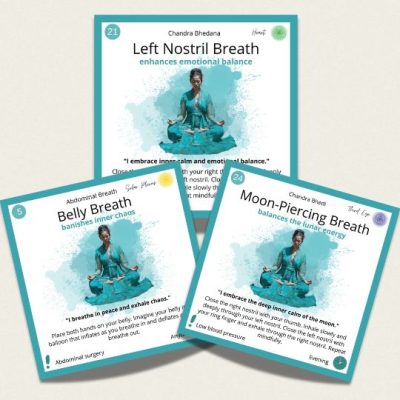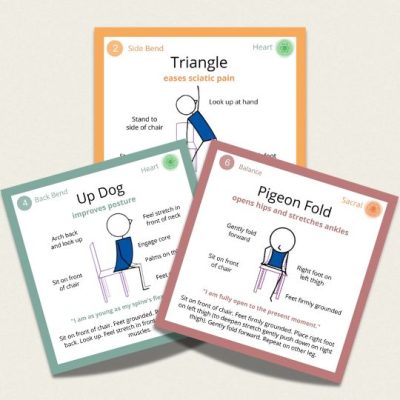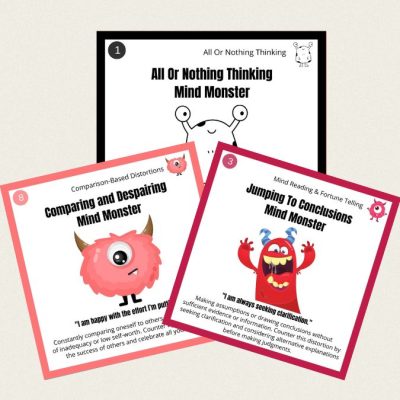Behind the Scenes: An Insider’s Look at What Yoga Teacher Training Is Really Like
Hi, my name is George Watts. I’m a full-time BWY yoga teacher and creator of the online Yoga Lesson Planner.
If you’re considering embarking on a yoga teacher training journey, you may be wondering what to expect.
In this post, I’m going to give you an honest, no-holds-barred review of my own two-year training course from 2009 to 2011. Get ready for an insider’s look at the highs, lows, and everything in between of a yoga teacher training program.
I’m excited to share my insider thoughts and experiences on this often-secretive subject.
Allow me to begin by addressing the dreaded “homework hell.”
From Homework Hell to Yogic Bliss: Conquering the Challenges of Yoga Teacher Training
Yoga teacher training is going to be hell.
Seriously. I’m not joking. It’s hard work. It’s like going to university. If you rock up to your teacher training thinking it’s going to be a walk in the park (umm, like I did), you’re in for a rude awakening.
And that’s a good thing!
You don’t want it to be easy. Trust me. The “hell” is worth it when you show up to class and know what the heck you’re doing.
There will be more homework than you thought. Homework will be coming out of your ears. There will be subjects that scramble your brain, like anatomy! There will be long, long, long hours of hard, hard, hard work!
I don’t say this to scare you off unless you like the easy route, and in that case, I hope I did scare you off.
As a qualified Yoga teacher, you will be responsible for the health and well-being of hundreds of people over your teaching career. And like it or not, students always put their yoga teachers on a pedestal because they think they are morally, physically, and emotionally superior to them.
You’re not.
You’re human.
You’re very, very human.
Next, let’s discuss overcoming embarrassing incidents and thriving as a flawed Yoga teacher.
Overcoming Embarrassing Incidents and Thriving as a Flawed Yoga Teacher
I personally like to let my students know just how erm, “human” (a.k.a. flawed) I am.
For example, let’s take the time when I got caught speeding to my yoga class. I walked into class clutching my “slow down themed yoga lesson” between my caught red-handed fingers.
Instead of hiding this humbling experience when the class started, I confessed to them what happened, and not a single student missed the irony of it.
But they’re a forgiving bunch, and many of them came up to me after the class and had a light-hearted chuckle with me.
The point is that they appreciated knowing that “their yoga teacher” was as human, as flawed, and as mistake-prone as they were.
Next up, let’s discuss the truth about teaching Yoga as an introvert.
Breaking the Myth: The Truth About Teaching Yoga as an Introvert
One thing I found hard when starting the course was my natural introversion.
I love nothing more than writing, reading, and pottering around in the garden. All wonderfully solitary pursuits.
I’m comfortable with being on my own.
I’m uncomfortable in a group.
Or, that is, I was uncomfortable in a group when I first started the training course. It took several months for me to be comfortable with my introversion and with becoming a bit more extroverted because teaching yoga is a people business.
I love interacting with my students. Love it!
But I also still love writing, reading, and pottering around in my garden on my own.
When I’m in a yoga class, I put my extroverted, people-person hat on. When I’m at home, I put my natural introvert hat back on (my partner is also a Type B personality, so we respect each other’s quiet space).
If you are introverted and want to become a yoga teacher, you will need to come out of your shell and learn to enjoy being around groups of people.
At the end of every class, there is always, always, always a group of students who stay behind to ask questions, laugh, and chat with others. Friendships are always being cultivated between students in my classes, and that makes me smile.
Now, let’s talk about how to unlock the power of yoga teaching with my secret success sauce.
Unlock the Power of Yoga Teaching with My Secret Success Sauce
I firmly believe one of the things that helped forge a people-focused bond in my classes is that I dared to include a bit of partner yoga and laughter yoga in my traditional Hatha yoga classes.
Why did that work so well?
Firstly, Partner yoga gets students to interact with one another. I always ask my students to partner up with someone new. They’re not allowed to stick with the person they came to class with.
Secondly, the laughter yoga exercises bring a lightness to the class. The adults in the class get to do silly things during a laughter yoga exercise that is wondrously freeing.
Next, let’s discuss lessons from the tortoise and the hare.
Yoga Teacher Training Success: Lessons from the Tortoise and the Hare
There will be one or two exceptionally good trainees during your training.
There was one person in my training who was so good at the “practice teachings” that everyone would look at each other and secretly think: “Holy crap, I’m never going to be that good!“
That’s a natural reaction.
Don’t be ashamed.
The reality is that you might be a tortoise – slow and steady. While the star in the class is a hare, who has bolted off fast.
In the next section, I’m going to take a lot of pressure off your shoulders by highlighting the fact that you will suck at teaching Yoga for your first 100 classes.
You Will Be Downright Awful At Teaching Yoga For Your First 100 Classes: And That’s Okay
You, unless you’re that “student star” will almost certainly be awful at teaching yoga for the first year of teaching.
Awful Definition: very bad or unpleasant
In fact, I will go as far as to say that you’ll probably be awful at teaching yoga for at least your first 100 classes. And you must be okay with that.
The trick is to realise that “you’re not awful”, but that your “teaching skills are awful” because you’re a newbie teacher, and that’s normal.
By practising self-compassion (treating oneself with kindness, understanding, and acceptance, especially in the face of failure, mistakes, or perceived shortcomings), you can avoid harsh self-judgment and criticism, and instead focus on learning, growth, and improvement.
You’re not expected to be a master yogi from day one. The most important thing is to have a growth attitude (a belief that your yoga teaching skills can be improved with effort and deliberate practice) and a genuine desire to help your students. Even if you struggle with explaining certain poses or your sequencing doesn’t quite flow perfectly, your students will appreciate your effort and your passion for yoga.
And hey, if you do mess up during the class, try this trick.
Ask your students to close their eyes and focus on their breath. This will give you 10 valuable seconds to get back on track, and the students get some shut-eye relaxation.
And, of course, create a yoga lesson plan, and take it into class with you. Don’t make the newbie yoga teacher mistake of thinking that after two years of teaching training, you can stop planning your classes. It doesn’t work that way.
Also, I’ve discovered that a little humour and lightheartedness can go a long way in making students feel comfortable and connected.
So take a deep breath, trust in yourself, and remember that every great yoga teacher was once a newbie too. With time, practice, and a little bit of patience, you’ll find your groove and become an awesome teacher who inspires and uplifts your students.
I’ve taught over a thousand classes, and I still learn something new in each class.
After the first year, you’ll start taking yourself less seriously, and will therefore be able to “focus more on your students” than on how you performed…and you’ll morph from awful to an awesome teacher.
Awesome Definition: extremely impressive
Becoming awesome at teaching yoga is a bit like being a professional speechmaker. Good speechmakers are good at making speeches because their focus is on “you”, the crowd, versus on what their next word or sentence is going to be.
As I’ve already said, but it’s worth repeating, the trick to teaching yoga well is to prepare a yoga lesson plan before arriving at class (eg. by using the Yoga Genie Lesson Planner) and unleash your own teaching personality, instead of your relying on your teacher trainer’s personality.
Now that you’re okay with being awful at teaching, in the next section, I’m going to show you why you ought to resist the urge to be a clone of your yoga teacher trainer.
Don’t Be A Clone: Embrace The Quirky You
The worst thing you can do is be a clone of your teacher trainer. It’s far better to be a faulty, quirky “you” than a perfect clone.
Trust me on that one!
Let the “you” shine through in your classes.
When I first started teaching yoga I was definitely a little clone of my teacher trainer. She was a top-class yoga teacher and trainer but was quite serious. That just didn’t fit my personality. I want my students to be disciplined with their practice, but that doesn’t mean I need to be a drill sergeant.
Humour can be a beneficial tool for yoga teachers in four wondrous ways:
- Creates a positive and welcoming atmosphere: Adding humour into your yoga classes can help to create a relaxed and welcoming atmosphere. When students feel at ease and comfortable, they are more likely to engage with the practice and feel more connected to the teacher.
- Helps to relieve stress and tension: Yoga is often practised as a means of reducing stress and tension, and humour can be an effective way to help students let go of any tension they may be holding onto. When students have a little chuckle (even if it’s a silent one) and feel good during class, they can release built-up stress and feel more relaxed.
- Increases engagement and enjoyment: Humour can also help to keep students engaged and interested in the class. When classes are fun and enjoyable, students are more likely to stick with their yoga practice and continue to attend classes.
- Provides a way to connect with students: Sharing humorous stories (like my “speeding ticket” incident that I doodled above) can help yoga teachers to connect with their students on a personal level. When students feel like they know their teacher and can relate to them, they are more likely to feel comfortable asking questions and seeking guidance.
Overall, humour can be a valuable tool for yoga teachers to create a positive and enjoyable atmosphere in their classes, help students release stress and tension, and foster a sense of connection with their students.
Next, you’ll discover that teaching Yoga is a never-ending learning experience.
The End Of Your Yoga Teacher Training: Is Just The Beginning In Disguise
There is no end to the yoga teacher’s learning!
There are an infinite variety of yoga lesson plans to craft, thousands of yoga poses, endless yoga anatomy to learn, and don’t forget all the Sanskrit that needs learning, but if you love teaching yoga, you’ll love picking up as many yoga lesson planning tips as you can.
Okay, you’ve made it this far, which tells me you’re serious. So, in the next section, I’m going to let you know about a must-have tool used by 1000+ yoga teachers worldwide.
Remove Yourself From The Lesson Planning Hole Of Doom with my Online Yoga Lesson Planner
One of the best ways I know of learning the craft of Yoga lesson planning, once you’ve got your teacher training certificate, is to use the online Yoga Lesson Planner.
You get to see 100,000+ completed yoga lesson plans, and you can also copy and edit them.
So, if you’re a yoga teacher trainee, and want to save a lot of unnecessary wasted time and effort, my online Yoga Lesson Planner is here to make your yoga lesson planning life easier, smarter, and more enjoyable.
With just a few clicks, you can create a seamless and organized lesson plan in no time. Say goodbye to the stress and hello to more time on the mat.
Don’t believe me?
Give it a try and see for yourself.
Take a few minutes to check out this page on my site and experience the joy of turning yoga lesson planning into a thing of joy.
Next up, ten questions to ask yourself before signing up for a Yoga teaching training course.
10 Questions To Ask Yourself Before Signing Up For A Yoga Teacher Training Course
“Why do I want to become a yoga teacher?”
“What style of yoga am I most interested in teaching?”
“Am I prepared to commit to the time and financial investment required for a teacher training program?”
“Do I have a regular, daily yoga practice?”
“What qualifications and experience does the teacher training program offer?”
“Does the program align with my personal values and beliefs?”
“What are the program’s expectations and requirements for certification?”
“What kind of support and guidance is available from the program during and after the training?”
“What kind of teaching opportunities will be available to me after completing the program?”
“How will becoming a yoga teacher enhance my personal growth and development?”
Next up, is my answer to question one on the list – “Why do I want to become a yoga teacher?”
Why Do I Want To Become A Yoga Teacher?
Below are the five main reasons why I became a yoga teacher:
Sharing the benefits of yoga: I become a yoga teacher because I wanted to share the physical, mental, and emotional benefits of yoga with others.
Deepening my own practice: Teaching yoga is a surefire way to deepen your own practice and understanding of yoga. I went a step further and created an online Yoga Lesson Planner – and have spent over 1000 hours adding 3000+ asanas, breathing exercises, meditation exercises, mantras and mudras to it.
Following a passion: My Mum was a Yoga teacher (and so was my Aunty), so Yoga was very much in my blood. I simply wanted to make it a bigger part of my life by teaching it.
Helping others: As a Yoga teacher I feel that I can make a positive impact on the lives of my students by helping them to feel better physically and mentally. That makes me feel all warm inside.
Career change: Before becoming a Yoga teacher I was a business consultant and struggling entrepreneur. I was getting a bit jaded with the struggle and when my partner saw an advert for a local Yoga teacher training course, the time felt right (even though, I couldn’t really afford it…but found a way).
Next up, is my answer to question two on the list – “What style of Yoga am I most interested in teaching?
What Style of Yoga am I most Interested in Teaching?
I wrote an epic blog post called: 17 Types Of Yoga: Which Is Best For You. The post covers Hatha yoga, Chair Yoga, Vinyasa yoga, Ashtanga yoga, Iyengar yoga, Restorative yoga, Yin yoga, Bikram yoga, Kundalini yoga, Jivamukti yoga, Anusara yoga, Sivananda yoga, Power yoga, Aerial yoga, Acro yoga, Prenatal yoga and more!
Consider which Yoga style resonates with you most, and which you feel most comfortable teaching.
You may also consider the needs and interests of your potential students and the setting in which you plan to teach, as these factors may influence your choice of style.
For example, if you’re going to mainly teach senior yoga, you’ll probably want to focus on Chair Yoga, before adding any more Yoga styles to your resume. If, however, you’re going to teach 20 to 30-year-old A-type city folk, then may consider Ashtanga yoga is your thing.
Next up, is my answer to question three on the list – “Am I prepared to commit to the time and financial investment required for a teacher training program?
Am I Prepared to Commit to the Time and Financial Investment Required for a Yoga Teacher Training Program?
This is the Big One! It’s so big that it probably should have gone in the number one position on my list.
To become a certified yoga teacher, you will need to complete a yoga teacher training program that can take anywhere from several weeks to several years, depending on the program’s requirements (my BWY course took 2 years).
You will also need to factor in the cost of the program, which can range from a few hundred to several thousand pounds, depending on the location and the level of training (my 2-year BWY course cost me several thousand pounds).
Before committing to a yoga teacher training program, it is important to assess your readiness to make a significant time and financial investment.
I just had enough money for my training program, but I had to forego virtually 99% of luxuries (e.g. holidays, meals out) for two years, and occasionally go overdrawn on my bank account.
If you can honestly answer this question: “Am I Prepared to Commit to the Time and Financial Investment Required for a Yoga Teacher Training Program“, you can determine whether you are prepared to make the necessary time and financial investment in a yoga teacher training program.
Next up, is my answer to question four on the list – “Do I have a regular daily yoga practice?”
Do I have a Regular “Daily” Yoga Practice?
Before enrolling in a yoga teacher training program, it is important to have a regular yoga practice
That’s really, really, really important.
If you find it difficult to unfurl your mat on a daily basis, then you’re not ready for a yoga teacher training program (if that’s you, then you might this blog post I wrote called The Power Of Daily Yoga Practices: Unfurl Your Mat).
As a yoga teacher, you will be expected to have a solid understanding of yoga poses, alignment, and sequencing, and be able to lead students through safe and effective classes. That could only happen with a “daily” Yoga practice and going through a Yoga teacher training programe.
Here are some questions to consider:
- Have I been practising Yoga daily for at least six months to a year?
- Have I been going to a Yoga class for at least a year?
- Do I have a basic understanding of yoga poses and their alignment?
- Am I comfortable practising and teaching sun salutations, which are the foundation of many yoga classes?
- Do I have experience with a variety of yoga poses, including standing poses, forward bends, backbends, sidebends, twists, and inversions?
- Do I have a basic understanding of yoga philosophy, such as the eight limbs of yoga and the concept of mindfulness?
If you have a daily yoga practice and have a basic understanding of yoga poses (and yoga sequencing), and yoga philosophy, then you may be ready to take the next step and enrol in a yoga teacher training program. However, if you feel that you need more time to develop a consistent “daily” yoga practice, it may be beneficial to continue practising and learning before pursuing teacher training.
Next up, is my answer to question five on the list – “What qualifications and experience does the Yoga teacher training program offer?”
What Qualifications and Experience Does the Yoga Teacher Training Program Offer?
When considering a yoga teacher training program, it is important to look at the qualifications and experience of the program’s faculty and instructors.
Here are some questions to consider:
- Who are the instructors of the program, and what are their qualifications and experience?
- Are the lead instructors certified by a recognized yoga organization, such as BWY Yoga, Yoga Alliance or the International Association of Yoga Therapists (IAYT)?
- How many years of experience do the lead instructors have as yoga teachers, and how long have they been teaching teacher training programs?
- Are there guest instructors or experts in specific areas, such as yoga anatomy or yoga philosophy, who will be teaching parts of the program?
- What kind of support or mentoring will be available after completing the program?
- What kind of yoga business training and business resources do they provide?
It is important to choose a program that is taught by experienced and knowledgeable instructors who are certified by reputable yoga organizations. This will ensure that you receive high-quality instruction and are well-prepared to teach yoga to others.
Additionally, look for a program that offers ongoing support and mentorship, as this can be invaluable as you begin your career as a yoga teacher.
Next up, is my answer to question six on the list – “Does the program align with my personal values and beliefs?”
Does the Program Align with My Personal Values and Beliefs?
When choosing a yoga teacher training program, it is important to consider whether the program aligns with your personal values and beliefs.
Take me and my Mum for example.
Dru Yoga, which my mother teaches, is a style that emphasizes a flowing and spiritual practice, which differs from my own teachings of Hatha Yoga. While I do incorporate some flowing Dru Yoga movements, which resemble those of Tai Chi, into my classes, I prefer not to teach it as my primary practice since it does not align with my personality. On the other hand, Dru Yoga suits my mother perfectly, like a comfortable and familiar glove. It’s hard for me to envision her leading a traditional Hatha Yoga class because it doesn’t quite match her personality.
Yoga is more than just a physical practice; it is a holistic approach to health and well-being that encompasses physical, mental, and spiritual aspects of life. Therefore, it is important to choose a program that resonates with your personal values and beliefs.
Here are some questions to consider:
- Does the program offer a comprehensive approach to yoga, including physical practice, yoga philosophy, and meditation?
- Is the program rooted in traditional yoga practices, or does it incorporate modern approaches and techniques?
- Does the program emphasize the importance of self-awareness, compassion, and mindfulness, which are important aspects of yoga?
- Does the program align with my personal values and beliefs, such as sustainability, social justice, or inclusivity?
By choosing a program that aligns with your personal values and beliefs, you are more likely to have a meaningful and transformative experience that will prepare you to teach yoga in a way that is authentic and aligned with your personal values.
Next up, is my answer to question seven on the list – “What are the program’s expectations and requirements for certification?”
What are the Program’s Expectations and Requirements for Certification?
When considering a yoga teacher training program, it is important to understand the expectations and requirements for certification.
Here are some questions to consider:
- What are the minimum attendance requirements for the program, and what is the policy for making up missed sessions?
- What is the minimum level of proficiency required in order to graduate from the program?
- Does the program require any written assignments or teaching demonstrations, and if so, what are the expectations for these assessments?
- How many hours of teaching experience are required, and are there opportunities for supervised teaching?
- What are the requirements for maintaining your certification, such as continuing education or renewal fees?
Understanding the expectations and requirements for certification is important for ensuring that you can successfully complete the program and receive your certification. Make sure to read the program’s materials thoroughly, ask questions, and clarify any uncertainties before enrolling.
Next up, is my answer to question eight on the list – “What kind of support and guidance is available from the program during and after the training?”
What kind of Support and Guidance is Available from the Program During and After the Training?
When choosing a yoga teacher training program, it is important to consider the kind of support and guidance that will be available to you during and after the training.
Here are some questions to consider:
- Will you have access to a mentor or advisor during the program to help guide you and answer any questions you may have?
- Does the program offer opportunities for feedback and assessment from instructors and peers?
- Is there a community of graduates who can offer support and guidance after the program is completed?
- Are there resources available to help you with yoga business development after completing the program?
- What kind of ongoing education or continuing education opportunities are available to help you deepen your knowledge and skills after the program?
Having access to support and guidance can be invaluable during the teacher training program and as you begin your career as a yoga teacher. Also, there are also lots of online resources for yoga teachers (umm, like my site). Look for a program that offers resources and support to help you succeed and continue to grow after completing the program.
Next up, is my answer to question nine on the list – “What kind of teaching opportunities will be available to me after completing the program?”
What Kind of Teaching Opportunities will be available to me after Completing the Program?
When considering a yoga teacher training program, it is important to think about the teaching opportunities that may be available to you after completing the program.
Here are some questions to consider:
- Does the program provide any assistance or guidance with finding teaching opportunities?
- Are there opportunities to teach within the program, such as assisting in classes or leading sections of the program?
- What kind of yoga studios, gyms, or other fitness facilities are in your area, and what types of yoga do they offer?
- Are there opportunities to teach private clients or corporate classes in your area?
- Are there opportunities to teach retreats or workshops?
Researching the teaching opportunities in your area and understanding the program’s guidance and resources for finding teaching opportunities can help you make an informed decision about which program is the best fit for your goals as a yoga teacher. It can also help you plan for your career path and develop a strategy for building your teaching practice after completing the program.
Next up, is my answer to question ten on the list – “How will becoming a yoga teacher enhance my personal growth and development?”
How will becoming a Yoga Teacher enhance my personal Growth and Development
Becoming a yoga teacher can have a significant impact on your personal growth and development. Here are some ways in which teaching yoga can enhance your personal growth:
- Deepening your understanding of yoga philosophy can help you cultivate a greater sense of self-awareness and inner peace.
- Improving your physical practice, as teaching requires a deeper understanding of the postures and alignment principles.
- Developing your communication and interpersonal skills, which can help you build more meaningful relationships and improve your ability to connect with others (especially if you’re an introvert like me).
- Cultivating a daily self-care yoga practice, which can help you manage stress and maintain a healthy work-life balance.
- Encouraging you to step outside of your comfort zone, try new things, and take on new challenges can help you build confidence and resilience.
Becoming a yoga teacher requires a commitment to ongoing learning and growth, which can have a positive impact on your personal development. It can also provide a sense of purpose and fulfilment as you help others on their own yoga journeys.
Okay, that was the last question on my list. It’s time for my conclusion on an insider’s look at the journey of Yoga teacher training.
George’s Conclusion
The yoga teacher training is going to be much, much harder than you think.
In my two-year BWY yoga teacher training course, out of the 22 that started only 14 finished. I am certain that the high turnover rate is because the shock of the training not being a “walk in the park” was too great, so they got spooked and dropped their dream of being a yoga teacher.
That’s a real shame because the world was robbed of eight perfectly good yoga teachers.
Don’t let that happen to you.
If you go in with the attitude that the yoga teacher training is a University Degree really well disguised as a humble yoga teacher training course, you’ll be fine.
Before you go, if you have a few minutes spare, take a quick peek at my online Yoga Lesson Planner – it was designed by me (a full-time Yoga teacher) and my team to make yoga lesson planning quick and easy.
Pssst, before I go. If you have any other questions about what teacher training is like, please email me. I reply to all emails within 24 hours and will answer any questions you have.





















